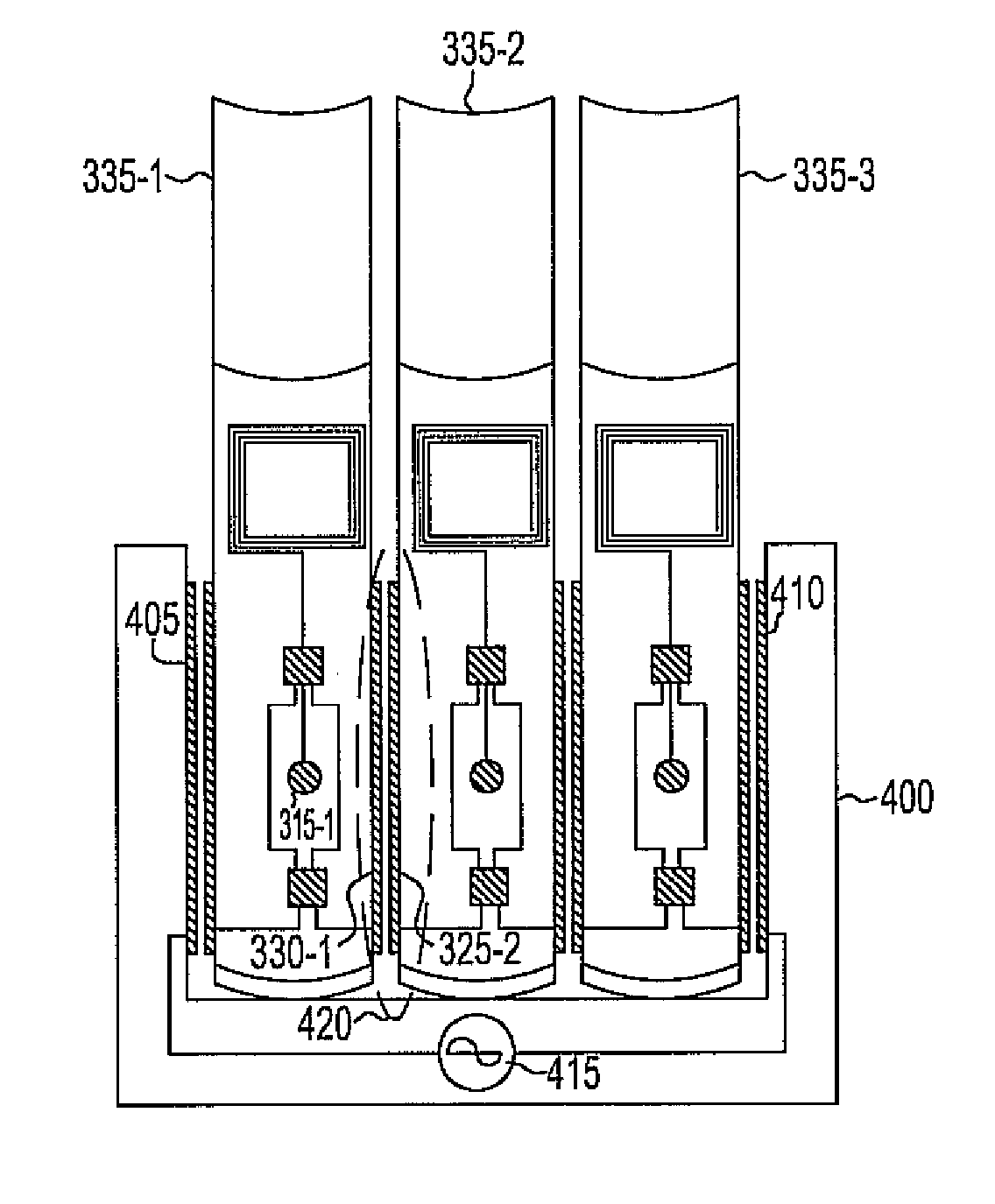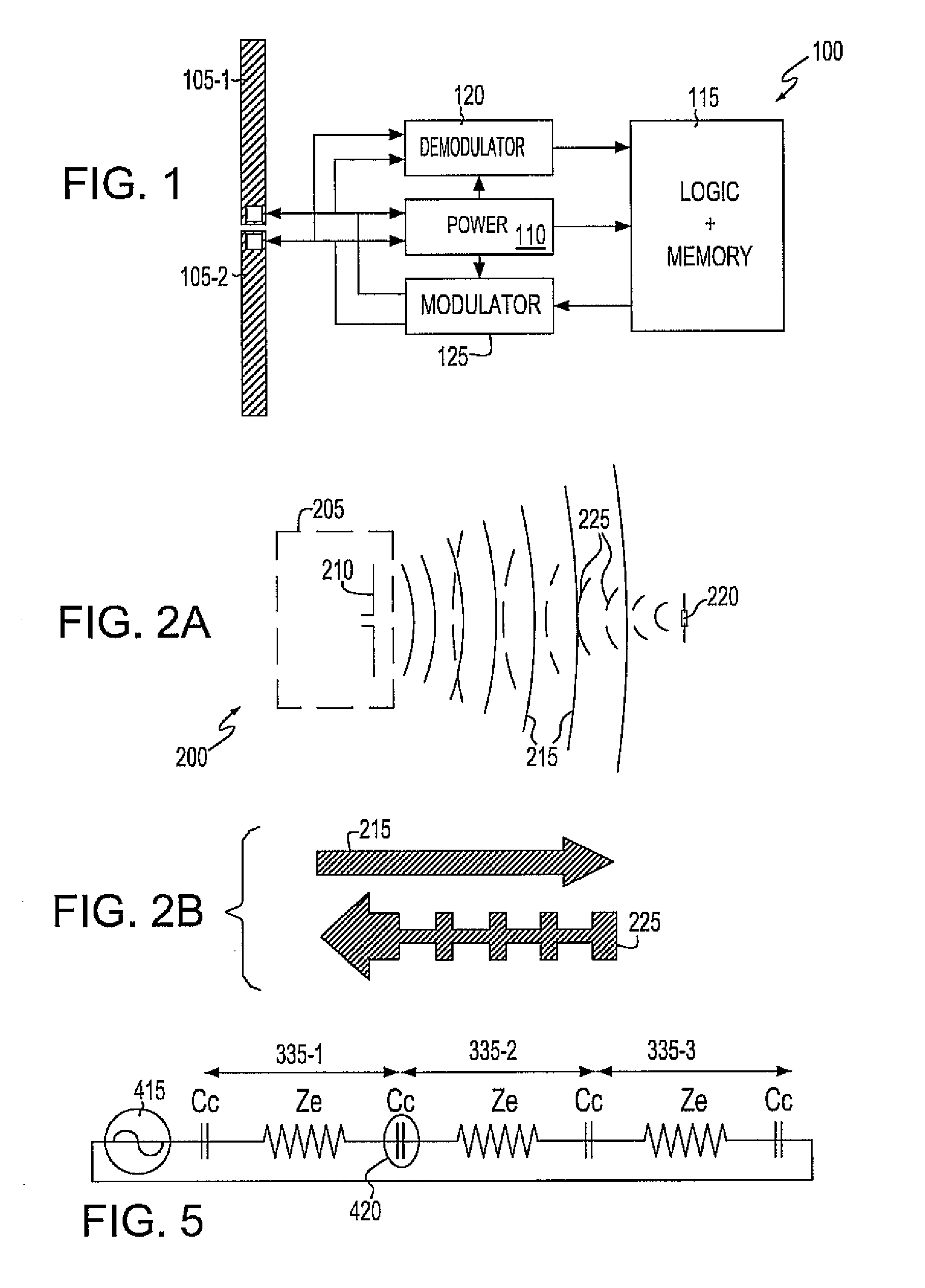METHOD AND SYSTEMS FOR LOCALIZING OBJECTS USING CAPACITIVELY COUPLED RFIDs
a capacitively coupled, object technology, applied in the direction of digital output to print units, burglar alarm mechanical actuation, instruments, etc., can solve the problems of cumbersome constraints, difficult to find objects within such a mediatheque, and the reading range of passive rfid tags is quite limited, so as to achieve low cost rfid tags and long reading ranges
- Summary
- Abstract
- Description
- Claims
- Application Information
AI Technical Summary
Benefits of technology
Problems solved by technology
Method used
Image
Examples
Embodiment Construction
[0035] As mentioned above, the proposed invention aims to address the problem of identifying a mediatheque object, with an innovative RFID tag that allows long reading range while being equivalent in terms of size, form factor and price to the passive RFID tags. In the following description, this innovative RFID tag is referred to as the “Capacitively Coupled RFID tag”, or CCRFID for short.
RFID Systems
[0036] The core of any RFID system is the ‘Tag’ or ‘Transponder’, which can be attached to or embedded within objects, wherein data can be stored. An RFID reader, generically referred to as reader in the following description, sends out a radio frequency signal to the RFID tag that broadcasts back its stored data to the reader. The system works basically as two separate antennas, one on the RFID tag and the other on the reader. The read data can either be transmitted directly to another system like a host computer through standard interfaces, or it can be stored in a portable reader...
PUM
 Login to View More
Login to View More Abstract
Description
Claims
Application Information
 Login to View More
Login to View More - R&D
- Intellectual Property
- Life Sciences
- Materials
- Tech Scout
- Unparalleled Data Quality
- Higher Quality Content
- 60% Fewer Hallucinations
Browse by: Latest US Patents, China's latest patents, Technical Efficacy Thesaurus, Application Domain, Technology Topic, Popular Technical Reports.
© 2025 PatSnap. All rights reserved.Legal|Privacy policy|Modern Slavery Act Transparency Statement|Sitemap|About US| Contact US: help@patsnap.com



